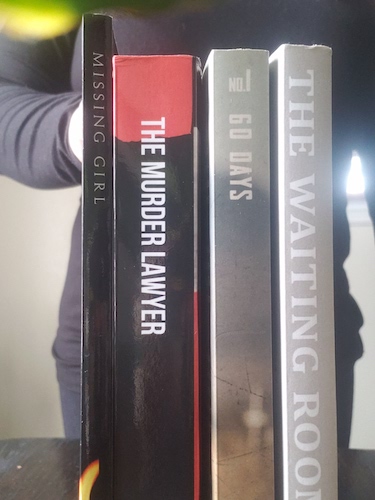
Every one of these books tells a story, but it might not be the story you think.
Earlier this week, I chatted with debut author, Kristina Brune, and her guests during a virtual zoom release for her new book. One of the questions asked was how much of the book was fiction and what parts of the author’s life were weaved between the pages.
That’s a question that fiction writers get a lot, and it’s a question I want to address today with you.
How much of me is in my books?
The truth is not as much as you think, but more than I might realize. Confused? Let me explain.
Some of my stories like The Waiting Room are about small-town life, which I’m very familiar with because I grew up in a small rural community. It’s not so small any more thanks to suburban expansion and next-generation farm families selling off acres of land for huge payouts, but I know what it’s like to live among the butterflies and Baptists, to quote Miranda Lambert. I know how small-town life can feel stifling and I drew on some of those feelings when I wrote Charlotte’s, Sylvie’s, and Harold’s stories.
You’ll also find little tidbits of my childhood memories in stories like when I described the dusty reading chair in Mrs. Lecrone’s room in Missing Girl. Mrs. Lecrone was my kindergarten teacher and she had a huge chair in the reading corner. Each time one of us would sit in it, you’d see the dust particles swirling in the air. It was magical!
Another part of my life that shows up in my stories is during the scene where Addie cleans the church in The Waiting Room. My mom’s experience was nothing like Addie’s, but she was one of the ladies who cleaned the church when I was little. I have so many fond memories of messing around on the organ in the loft, lighting the prayer candles, and hiding among the vestments in the closet. That last part inspired a scene in 60 Days, but I don’t want to say more because it’ll give away too much. If you’ve read the book, you might recognize what I’m talking about.
Then there are the parts of my life that end up in my writing that I didn’t intentionally write about. I create characters and stories because I’m curious about the choices people make in their lives, and I try to write from perspectives that I don’t understand fully to gain a better understanding of human nature. Most of the time I do this intentionally, but sometimes I don’t realize I’m doing it.
A couple of years ago, before I started The Murder Lawyer, I was thinking about all the stories I had told up until that point and I realized every story dealt with, on some level, alcoholism. I told myself, I’m not going to write another story that has a character with a drinking problem because readers are going to get tired of the same story just told a different way. Yet, after reflecting on this realization, I came to understand that maybe, on a subconscious level, I was using those stories to work through some personal struggles I had with my sibling’s alcoholism. I didn’t know I was doing it at the time, but the relationship between Emily and Lizzie in 60 Days was my way of working out my feelings with a personal sibling relationship that has been damaged by alcohol and mental illness.

I never start out writing a novel with the intent of telling my story because that doesn’t serve the reader. It would only serve my ego. I write to tell the characters’ stories and let their voices use me as their vessel to speak and share, but sometimes our stories overlap. I know. It’s weird, but it’s the writer’s way; my way.
💕
